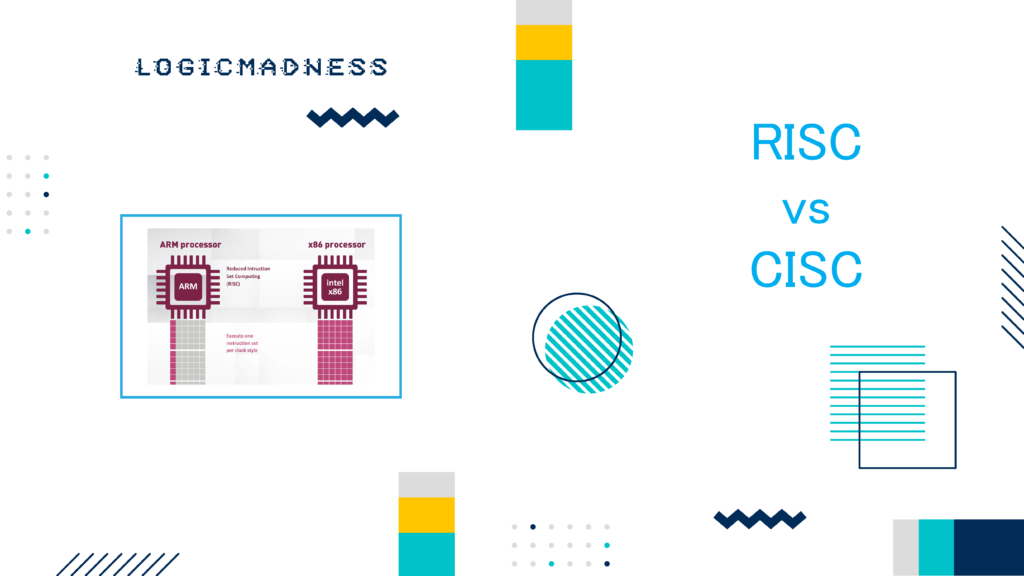When designing a chip or an integrated circuit (IC), engineers follow various layers of abstraction to simplify the design process. These layers allow designers to focus on specific parts of the design without worrying about lower-level details at every step. In this article, we’ll explore the different layers of abstraction and design styles used in chip design.
What are Design Abstraction Layers?
Design abstraction layers are different levels at which a hardware system can be described. Each layer focuses on a specific aspect of the design, allowing engineers to manage complexity and ensure that all components work together smoothly.
The following are the key abstraction layers used in chip design:
- Architecture Level
- RTL Level
- Schematic Level
- Transistor Level
- Physical Level
1. Architecture Level
The Architecture Level is the highest layer in the design process. It defines the overall structure of the system, including major sub-blocks and how they interact with each other.
For example, in a processor design, the architecture might include multiple cores, cache blocks, and cache coherence logic. These sub-blocks are grouped based on their functionality, and together, they form the complete system. The architecture level doesn’t dive into the details of how each component works but focuses on defining the key elements and their relationships.
Example:
A Processor Cluster could be represented as a single block with input-output signals, encapsulating all the cores and cache units.
2. RTL Level (Register Transfer Level)
At the RTL Level, designers write the system’s behavior in a Hardware Description Language (HDL), such as Verilog or VHDL. This level defines the functionality of individual blocks without focusing on the physical hardware details like circuit schematics or technology libraries.
At this stage, engineers describe the flow of data between registers and the operations performed on it, such as addition, subtraction, or logical operations.
module alu_32b (a, b, operation, result);
input [31:0] a;
input [31:0] b;
input [1:0] operation;
output reg [31:0] result;
always @(a or b or operation) begin
case (operation)
2'b00: result = a & b; // AND operation
2'b01: result = a | b; // OR operation
2'b10: result = a + b; // Addition
2'b11: result = a - b; // Subtraction
endcase
end
endmoduleIn this example, a simple 32-bit ALU (Arithmetic Logic Unit) is defined. The ALU takes two 32-bit inputs (a and b) and performs operations based on a 2-bit operation signal.
3. Schematic Level
At the Schematic Level, engineers translate HDL code into gate-level representations. They combine gates, such as AND, OR, and NOT gates, to create more complex circuits. Designers also use technology libraries that define the behavior of digital components like flip-flops and latches.
Truth Table Example for D Latch:
| D (Input) | E (Enable) | Q (Output) |
|---|---|---|
| 0 | 0 | Q |
| 0 | 1 | 0 |
| 1 | 0 | Q |
| 1 | 1 | 1 |
A truth table shows all possible input combinations and their corresponding outputs. Engineers use these tables to derive the necessary hardware schematic using Boolean logic or Karnaugh maps.
4. Transistor Level
At the Transistor Level, designers implement the design using individual transistors, such as CMOS (Complementary Metal-Oxide-Semiconductor) transistors. They carefully design the layout of these transistors to ensure they achieve the desired performance, including drive strength, voltage requirements (Vdd), and capacitance for the output load.
For example, engineers construct a NAND gate at the transistor level by connecting MOSFET transistors in a specific way. This ensures that the gate operates according to its truth table.
5. Physical Level
The Physical Level represents the final stage of chip design. At this level, engineers lay out the transistors and other components on the silicon chip using EDA (Electronic Design Automation) tools. These tools help engineers optimize component placement to achieve the desired performance, power consumption, and area (PPA).
Engineers also consider factors like resistance, capacitance, and other physical properties of the layout, which can impact the chip’s behavior after fabrication.
Design Styles: Top-Down vs. Bottom-Up
Chip designers typically follow one of two main design styles: Top-Down or Bottom-Up. These approaches define how designers structure the design and integrate components.
1. Top-Down Design
In the Top-Down approach, designers start by defining the highest-level block and then break it down into smaller sub-blocks. They continue dividing each sub-block into even smaller components until they reach the smallest indivisible unit.
Steps in Top-Down Design:
- Define the top-level block.
- Identify the sub-modules that make up the top-level block.
- Continue breaking down each sub-module into smaller components.
2. Bottom-Up Design
In the Bottom-Up approach, designers begin by identifying the smallest building blocks or cells. They combine and connect these cells to form larger components, eventually assembling them into the top-level block.
Steps in Bottom-Up Design:
- Identify available building blocks or cells.
- Combine these cells to create larger functional units.
- Assemble the units into the final design.
Combining Both Approaches
In practice, engineers often use a combination of both approaches. For instance:
- Top-Down helps define the system-level architecture and break it down into smaller sub-modules.
- Bottom-Up is used for designing the physical layout and synthesizing logic gates into hardware cells.
During the final stages of design, synthesis tools automatically select the most suitable physical cells (designed with the bottom-up approach) and place them according to the top-down system architecture.
Conclusion
Understanding the different design abstraction layers is critical for creating complex digital systems like processors and memory units. By breaking down the design process into manageable layers—architecture, RTL, schematic, transistor, and physical—engineers can focus on specific aspects of the system at each stage, making the entire process more efficient and manageable.
Whether engineers use a top-down or bottom-up approach, or a combination of both, these abstraction layers simplify the chip design process. They help ensure that the final product meets the desired specifications for performance, power, and area.

